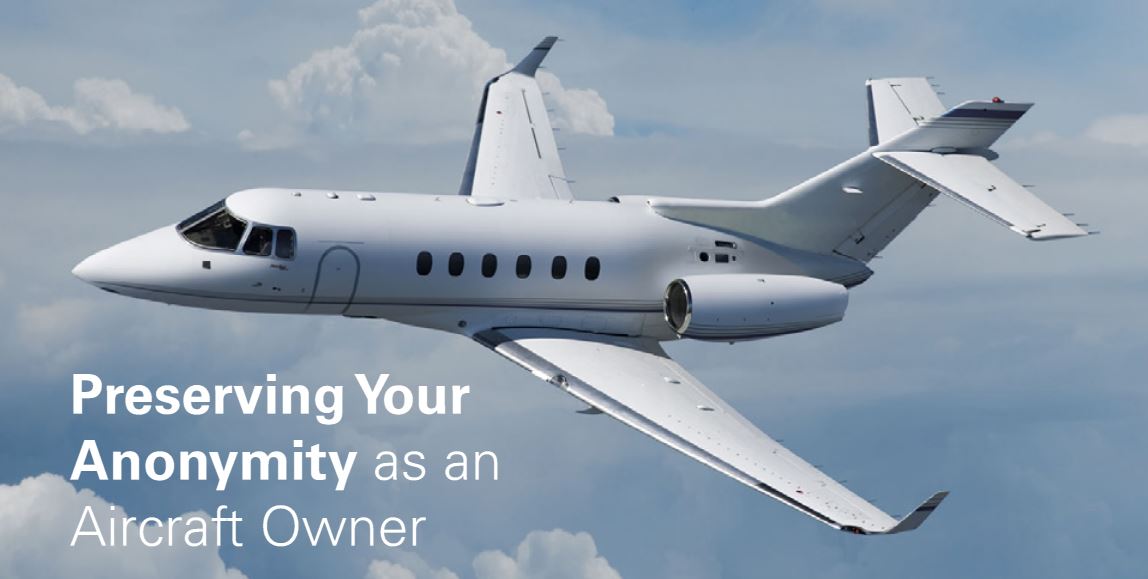Preserving Your Anonymity as an Aircraft Owner
Preserving Your Anonymity as an Aircraft Owner — Originally published in BusinessAir Magazine, October 2013, Volume 23, No. 10.
When an aircraft is bought or sold in the United States, two documents must be filed with the Federal Aviation Administration (“FAA”) – a bill of sale and registration application. The buyer must list an address on the registration application. Both documents become part of the public record and are searchable in a number of ways. This gives many aircraft owners or potential owners pause as they often do not want the public to know about their aircraft ownership or to have their address revealed in public records and thus subject to solicitations.
In order to preserve anonymity, several steps can be taken. First, the address listed on the bill of sale and registration application can be a “care of” address. This allows the owner’s attorney, management company or authorized agent to receive mailings on their behalf. However, this can sometimes complicate the overflight exemption process, and care should be taken to weigh both of these issues prior to the selection of a particular address. Another alternative is to use a post office box for the bill of sale. However, the FAA insists upon a physical address for the registration application.
Even if the address issue is solved, the owning entity must be named on both the registration application and the bill of sale. Often times, a special purpose company or limited liability company can be formed to own the aircraft. However, if this is the case, it is important to note that special purpose companies cannot operate the aircraft, and additional ownership structure planning will be necessary. In the case of a limited liability company, the FAA registry requires that a statement in support of registration be filed. The statement must list who the managers and members of the LLC are and who has the authority to act on behalf of the company. This statement in support of registration becomes part of the public record; therefore, forming a limited liability company for anonymity may not provide the protection sought. Interestingly, if the entity is a corporation, the FAA registry does not require a statement in support of registration. Accordingly, there is more anonymity in owning an aircraft under a corporation than a limited liability company. However, the tax implications and the liability risks should be weighed against the desire for anonymity.
Finally, a trust can be formed to own the aircraft. Often times aircraft owners feel this is a good way to protect their anonymity. However, the FAA requires that a copy of the trust agreement be filed with the registration and bill of sale unless the trust agreement contains sensitive estate planning information. Furthermore, the FAA has recently amended its requirements for owner trusts and owners may find the new, more stringent requirements less desirable than before.
There is no easy way to protect your anonymity when owning an aircraft. But ownership structure, strategic addresses and thoughtful advanced planning can allow an owner more anonymity, fewer solicitations and less public scrutiny.
Please contact Amanda Applegate at 877-237-5398 or aapplegate@aerlex.com.

